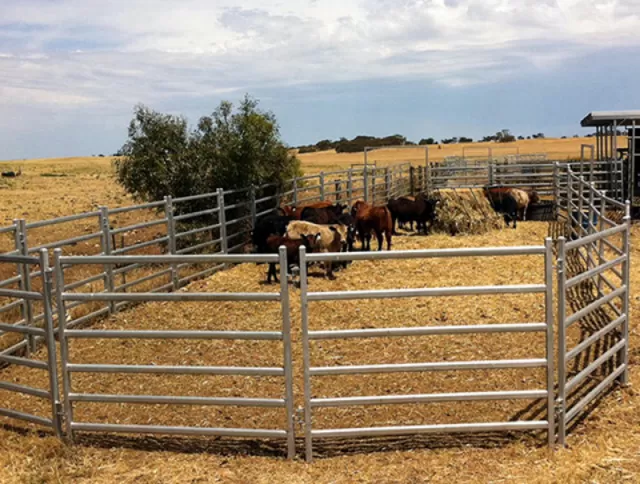Best Horse and Livestock Fence Panels For Your Cattle Ranch
Effective fencing is a crucial component of any successful cattle ranch, ensuring the safety and containment of livestock while providing durability against environmental elements. When it comes to horse and livestock fence panels, selecting the right type is essential.
**1. Pipe Corral Panels:
Material: Steel or aluminum pipes welded together.
Advantages:
Durability: Pipe corral panels are known for their strength and durability, providing a long-lasting solution for livestock containment.
Versatility: Suitable for both horses and cattle, these panels can be easily configured into pens, corrals, or chutes.
Considerations:
Weight: Steel panels can be heavy, which may impact portability and installation.
**2. Wooden Fence Panels:
Material: Treated wood panels or boards.
Advantages:
Aesthetics: Wooden panels provide a rustic and natural look, enhancing the overall appearance of the ranch.
Cost: In some cases, wooden panels may be more cost-effective than metal alternatives.
Considerations:
Maintenance: Wooden panels require regular maintenance, including painting or staining, to protect against weathering.
**3. Continuous Fencing:
Material: Steel pipes or rails attached horizontally to create a continuous fence.
Advantages:
Security: Offers a secure barrier with no gaps, minimizing the risk of livestock escaping or getting stuck.
Customization: Continuous fencing can be customized to various heights and configurations.
Considerations:
Cost: Continuous fencing may be relatively more expensive upfront but can offer long-term value.
**4. Welded Wire Panels:
Material: Steel wires welded together to form a mesh.
Advantages:
Versatility: Suitable for various livestock, including horses, cattle, and smaller animals.
Visibility: Allows for better visibility of livestock within the enclosure.
Considerations:
Strength: While durable, welded wire panels may not be as robust as solid pipe panels.
**5. Vinyl or PVC Fence Panels:
Material: Polyvinyl chloride (PVC) or vinyl panels.
Advantages:
Low Maintenance: Resistant to weathering, fading, and rot, requiring minimal maintenance.
Safety: Smooth surface reduces the risk of injuries to livestock.
Considerations:
Cost: Vinyl panels may have a higher initial cost but can provide long-term cost savings due to low maintenance.
**6. Bull Panels:
Material: Heavy-duty steel panels designed for containing larger and more robust livestock, such as bulls.
Advantages:
Strength: Specifically engineered to handle the strength and power of large livestock.
Security: Provides a secure containment solution for powerful animals.
Considerations:
Cost: Bull panels may be more expensive than standard panels due to their heavy-duty construction.
Choosing the Right Fence Panels:
Consider Livestock Type:
Different livestock may have specific requirements. Consider the size, strength, and behavior of your animals when selecting fence panels.
Evaluate Durability:
Assess the durability of materials in your specific environmental conditions. Factors like weather, soil type, and vegetation can impact the longevity of the panels.
Installation and Portability:
Choose panels that are easy to install and, if needed, reconfigure. Portability can be crucial for rotational grazing systems.
Budget Constraints:
While quality is essential, consider your budget constraints. Balance upfront costs with long-term durability and maintenance requirements.
Safety Features:
Prioritize panels with smooth edges and minimal protrusions to reduce the risk of injuries to livestock.
Local Regulations:
Be aware of any local regulations or zoning requirements related to fencing on your property.
Investing in the right horse and livestock fence panels is a crucial aspect of managing a successful cattle ranch. By considering factors such as material, design, and functionality, you can choose panels that provide a secure and efficient enclosure for your livestock, contributing to the overall success and sustainability of your ranching operation.



